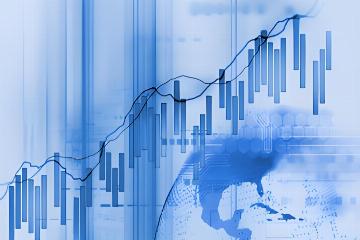The solar industry in Germany has recently found itself in a tumultuous state, facing substantial challenges due to dwindling consumer demandThis situation has become starkly apparent as both bankruptcy filings and job cuts surge across the sector, leading experts to describe the current predicament as one characterized by a “supply glut.” Investment sentiments are teetering on the edge of pessimism, with Dries Acke, the Deputy CEO of SolarPower Europe, pointing out that the prevailing trends are far from positive.
This downward spiral marks a stark contrast to the heady days of 2022 when energy prices soared, driving consumers to invest heavily in solar energyThat year saw an explosive growth in demand for photovoltaic (PV) panels in Germany, with manufacturers and distributors experiencing rapid expansionStatistical data from 2023 revealed a staggering increase of 15 gigawatts (GW) in new solar installations, more than doubling the 7.4 GW recorded in 2022, thus setting a record in Europe.
In the early stages of this boom, industry leaders like Dina Darshini, head of solar and battery divisions at LCP Delta, felt an exuberant sense of optimism
Advertisements
Observing the vibrant growth and innovation within the sector, she boldly anticipated that homegrown solar startups would maintain double-digit growth rates, leveraging their distinctive advantages to capture significant market sharesThat optimistic forecast, however, has been eclipsed by the current realities of 2024 when an unexpected decline in market demand has surfaced, placing the industry in an intense competition phase that has proven to be exceedingly challenging.
Reflecting on those previous years of prosperity, it is hard to reconcile that image with the present landscape, which sees significantly decelerated growthThe latest data indicates a mere uptick to 16 GW in new installations, a stark reminder of the rich history that preceded this downturnExpansion plans that many companies once held dear have now hit numerous roadblocks, thanks to a broader macroeconomic environment that has taken a toll
Advertisements
Rising interest rates have contributed to skyrocketing financing costs, creating barriers for consumers looking to invest in solar technology through loansAs interest rates climb, many are understandably deterred, further suppressing market demand.
Moreover, the situation has been exacerbated by a flood of cheaper solar panels and components entering the European market from overseas, driven by lower production costsLocal manufacturers are thus faced with an uphill battle; unable to compete on price, they experience severe strain and existential threats to their operations.
The accelerating competition and market dynamics have forced many solar companies into survival mode, leading to deep employee cuts and corporate restructuringsFor instance, Zolar, once a prominent player in the residential solar system market, announced a shocking strategic pivot in September to entirely withdraw from selling solar panels to households
Advertisements
This drastic move was largely driven by substantial operational pressures that the company facedTo stay afloat, Zolar also made the painful decision to lay off over 50% of its staff, setting off a chain reaction of turmoil within the organizationCEO Jamie Heywood lamented a peculiar predicament: despite advancements in technology that have considerably lowered the cost of installing solar systems—an apparent boon for boosting market demand—the corresponding decrease in energy prices has diminished consumers’ motivation to switch to solar power.
Other companies are sharing similar fates; Eigensonne, a supplier of solar panels, announced its bankruptcy by the end of 2023. Another supplier, ESS Kempfle, issued a warning of dark clouds hanging over the industry when it unveiled restructuring plans last AugustThere looms skepticism about Germany’s ability to reach its target of adding 19 GW of solar capacity annually by 2030, a critical part of its strategic ambition to achieve carbon neutrality by 2045.
Yet, amidst this rationale for concern, many industry insiders remain cautiously optimistic about the medium-to-long-term outlook
- Factors Influencing Energy Futures Market
- Trends in Financial Technology Development
- Trends in Capital Flows in Emerging Markets
- Meeting the Needs of Foreign Enterprises
- Applications of Supply Chain Finance
Darshini from LCP Delta holds the view that as households and businesses in Germany continue pushing for decarbonization, coupled with rising electrification rates, there remains a significant untapped demandHowever, there’s a note of caution: absent notable stimulus efforts, a return to the heights experienced in 2022 and 2023 seems unlikely, with the most reasonable scenario pointing toward a gradual recovery by 2030.
Fabian Heilemann, a venture capitalist from Berlin, echoed this sentiment, asserting that while the market remains fundamentally sound, numerous challenges are expected to arise in the next 12 to 36 monthsThis complex web of circumstances—ranging from shifts in consumer behavior to economic hurdles and competitive pressures—paints a picture of a sector grappling with the apparent dichotomy between unfulfilled potential and immediate adversities.
Thus, the once-bright horizon for Germany's solar energy sector is now marred by uncertainty, forcing stakeholders to navigate through a landscape defined by rapid change and fierce competition
